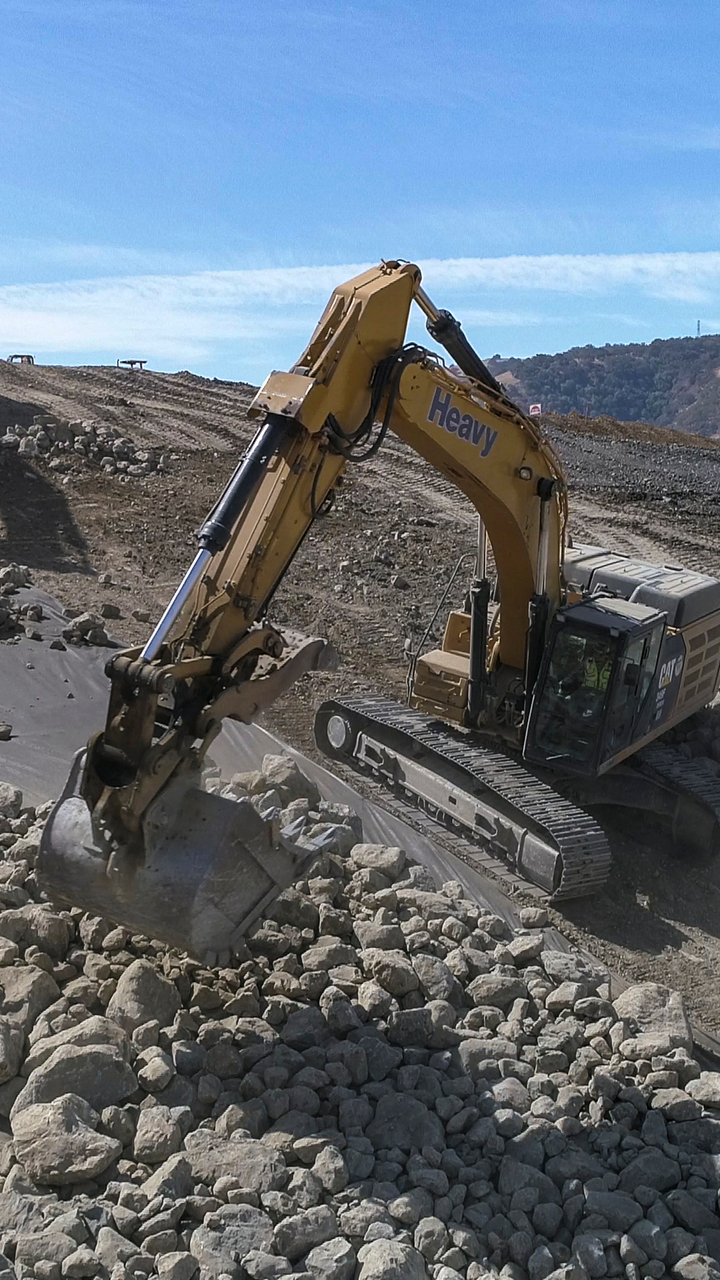Resilience, Vitality & Reliability Of Water Resources

- Project Name
- Calaveras Dam Replacement Project
- Location
- Sunol, CA - U.S.A.
- Client
- San Francisco Public Utilities Commission
New Dam Built Under Black & Veatch Oversight Near California Fault Line Safeguards Bay Area’s Water Supply
When built nearly a century ago, the dam forming the Calaveras Reservoir was considered the world’s biggest earth-fill impoundment. But its placed on one of California’s major fault lines led regulators in 2001 to declare the dam seismically unsafe. The result: the San Francisco Bay Area’s biggest source of drinking water was ordered to be scaled back to less than 40 percent of capacity, cutting the region’s fresh water supply.
Now, those quake-related concerns have washed away. With construction managed by a Black & Veatch-led team, a new replacement dam built near that Calaveras Fault can withstand a maximum credible earthquake of 7.25-magnitude. This ability means the San Francisco Public Utilities Commission (SFPUC) again can fill the reservoir, securing the resilience, vitality and reliability of water resources for some 2.7 million customers.
“This new dam, without question, was a massive undertaking, and Bay Area water consumers will benefit from water supply reliability for decades to come,” said Chris Mueller, Black & Veatch’s project director.
San Francisco Mayor London Breed stressed the importance of the impoundment’s structural upgrade, noting that “it is only a matter of time until we experience another major earthquake, and our critical infrastructure needs to be ready.”
The dam replacement project was the centerpiece of SFPUC’s $4.8-billion, 16-year push to overhaul its 167-mile regional water delivery system. And restoring the 4-mile-long body of water to its original capacity of 31 billion gallons reaffirms its status as the biggest of five reservoirs holding the region’s water supply. It’s additionally important for water supply resilience if supplies from the region’s main source, the Hetch Hetchy Reservoir, are ever disrupted due to a natural disaster or climate or water quality events such as earthquakes, wildfires or drought.

Getting Technical
Making the new dam a reality was a 21st-century engineering and construction feat, down to the moving of 12 million cubic yards of earth and rock — enough to fill four National Football League stadiums.
The new dam of tightly compacted earth and rock — at 22 stories tall, nearly the height of the Golden Gate Bridge’s traffic deck that soars above San Francisco Bay — sits just 1,000 feet downstream from the one it replaced. It has a crest length of 1,210 feet, a crest width of 80 feet, and a base nearly a quarter-mile wide.
Most of the materials were sourced from on-site borrow areas, including a hillside that was sliced off to remove two ancient landslides formation towering above the spillway alignment. Crews drilled 100 feet down into the rock below the new dam, injecting grout that sealed the foundation and the abutments. More than 500 tons of concrete was infused into the new impoundment’s foundation, creating a “grout curtain” to ward off underground seepage and strengthen the base.
The project also included a new 1,550-foot-long spillway that moves excess water from the reservoir around the new dam site and sends it safely below to the Calaveras Creek, then on to Alameda Creek . The spillway’s chute features a 30-percent downward slope leading to a stilling basin that slows the water before it is released into the creek, paring its erosion potential and protecting the fragile ecosystem.
Protecting Wildlife Today, Learning from Fossilized Ancestors
The new dam releases water for rainbow trout, steelhead, and other fish in downstream creeks. And while protecting the region’s water resilience, the massive project unearthed and painstakingly protected the area’s prehistoric past, uncovering during the site’s excavation a remarkable trove of fossils millions of years old.
California researchers say that 15 million to 20 million years ago, the region was submerged. Ancient whales roamed, and now-extinct megalodons — at up to 60-feet long, the most massive shark species to have ever lived — may have hunted dolphins before the ocean floor became fertile land.
The fossils — things like whale skulls, desmostylus teeth, shark teeth, crab claws, snails and fossilized palm trees — were shepherded to the University of California at Berkeley, where scientists anywhere will be able to use the artifacts to better understand evolution, geology and global change.


Contact Us
Looking for a partner in innovation?
Let's Talk
